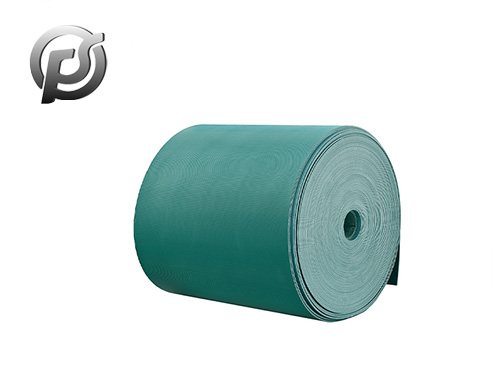The whole core
flame-retardant conveyor belt is mainly suitable for underground transportation of coal mines, but also for material transportation of metallurgical and chemical industries. The finished product of flame retardant conveyor is a section, each section is limited to a certain length, to a certain way to connect each section of an infinite whole can be used. The connecting part is the conveyor belt connector. According to the connection mode can be divided into mechanical joint and adhesive joint two kinds. According to the bonding temperature of the joint, there are two kinds of bonded joint: hot bonded joint and cold bonded joint. According to the material of the conveyor belt, it can also be separated. The hot rubber joints of the rubber conveyor belt are called vulcanized joints, and the hot rubber joints of the plastic conveyor belt are called plasticized joints. So the next main and you popularize the various connection modes of flame retardant conveyor belt.
A mechanical joint mechanically connects the ends of two conveyor belts. Simple installation, the whole core flame retardant conveyor belt can be loaded and unloaded at any time, but the joint strength is low. The good mechanical joint can reach 75% of the strength of the conveyor belt, and the bad one can reach 40%~50%. The groove property of the joint is poor. Mechanical joints are hook type, fastener type, hinge type, plate type, head riveting type and so on. Mechanical joints can only be used for the connection between the flame retardant layer and the whole core conveyor belt. In all forms of mechanical joints, nail type mechanical joints have high strength. In the coal industry, the hook type and the buckle type are widely used.
The vulcanized joint is suitable for the connection between the laminate core and the rubber conveyor belt with the wire rope core. The core of the joint part of the conveyor and the target surface in a certain form and process butt, on the surface of the flame retardant glue paste to make it bonded. Then, put the joint into the vulcanizer, heating under certain pressure and temperature conditions for a certain time, to get the bonding strength suitable for the joint. The strength of the vulcanized joint can reach 90% of that of the conveyor belt. The vulcanized joint of the conveyor belt with high strength steel wire core needs to be inspected by X-ray. The core conveyor belt of flame retardant wire rope can only be connected with vulcanized joints. Vulcanized joints and mechanical joints for flame retardant laminated rubber conveyor belts can be connected.
The plasticized joint is suitable for organizing the whole flame-retardant plastic conveyor belt with core. Its production process is basically similar to the vulcanized joint, but the specific Paralympic instrument is different. Its strength reaches 75%~80% of the conveyor belt strength.
Cold joint is suitable for rubber conveyor. Its manufacturing process is basically similar to the vulcanized joint, but the joint vulcanization is not heated, but at room temperature to apply a certain pressure, maintain a certain time (determined by the ambient temperature), so that the joint surface of the flame retardant rubber and the joint is naturally hardened. Its strength is slightly lower than that of vulcanized joints. Cold joint does not need heat source, simple equipment and operation, low labor intensity. The paste used in cold glue is toxic, so you need to wear protective gloves and a mask and stand upwind to prevent poisoning.
The above is the link method introduced by the whole core flame retardant conveying, I hope you have a further understanding of the work.
 Optimizing Operations with PE Conveyor Belts: Durability, Efficiency, and Versatility
Optimizing Operations with PE Conveyor Belts: Durability, Efficiency, and Versatility
 Exploring the Efficiency and Versatility of Light Conveyor Belts
Exploring the Efficiency and Versatility of Light Conveyor Belts
 Polyester Conveyor Belts: Enhancing Efficiency and Reliability in Material Handling
Polyester Conveyor Belts: Enhancing Efficiency and Reliability in Material Handling